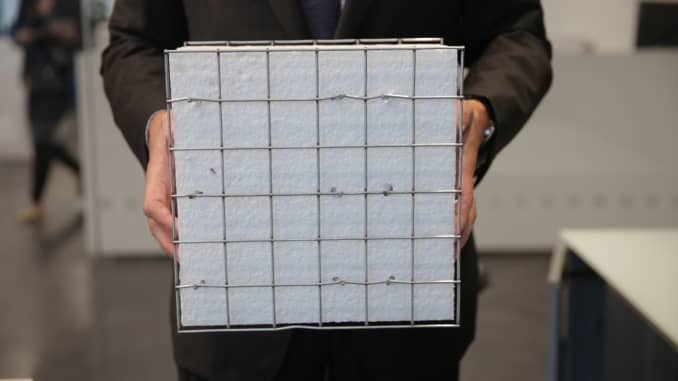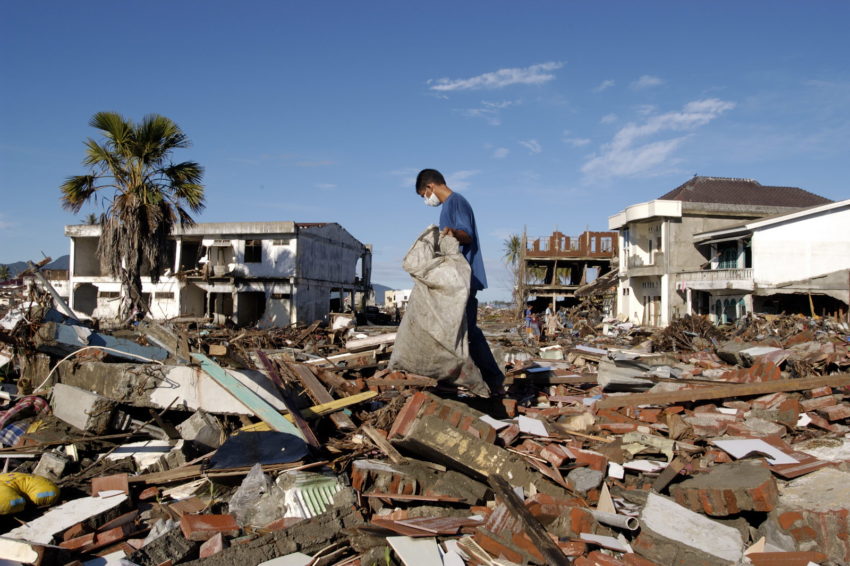There’s a building material that could keep houses intact during hurricanes, earthquakes, tornadoes and fires. While it’s been widely used around the world, the U.S. is a laggard in adopting the construction technique.
One company trying to change that is RSG 3-D, which is bringing a building material known as 3D cementitious sandwich panel for mass production in the U.S.
“Housing economists will tell you that 77 percent of homes built in the United States are at extreme risk for some type of natural disaster,” said RSG 3-D CEO Ken Calligar. “The East Coast is primarily hurricane, the Midwest is tornadoes, which we will also survive, the Rockies and the West are wildfire plus seismic events. We are resistant to all of that.”
Last year was the costliest year on record for climate disasters in the U.S., with over $300 billion in damages, according to NOAA.
Each panel made by RSG 3-D consists of fire retardant foam sandwiched between two wire mesh faces. The two faces are connected with reinforcement wires that run through the foam and the whole thing is enveloped in concrete.

“The RSG 3-D panel is known for it resilience to natural disaster,” Calligar said. “The panels are fireproof, they are seismic resistant beyond any earthquake recorded in human history and they are also hurricane resistant. They’ve been tested throughout the world through 200 hurricanes, hundreds of seismic events and several wildfires.”
The technology is not new. NASA has been using a version of it to build spacecraft for years because of its strength. And former President Carter used the material through his charity work for rehabilitation efforts decades ago on damaged buildings in Florida and Georgia.
“One of the major push for that technology actually was the adoption of that system by our former President Carter,” said Ayman Mossallam, a civil and engineering professor at the University of California, Irvine.
Carter’s use of the sandwich panels drew attention to the technology, but it was not clear at the time how to manufacture it on a large scale. A company in Austria called EVG cracked the code and created machines to assemble the panels, bringing down the costs of manufacturing.

RSG 3-D is one of a handful of companies using EVG’s technology to bring the material to the U.S. for mass production. Higher lumber costs, expensive skilled labor and more demanding building codes are making it an appealing alternative to conventional construction.

“The reason the product has not been used well in the United Stated to date is because we have wood,” said Geoffrey Evancic, the chief operating officer of Hutter Pioneer, a construction company that is working with the RSG 3-D panels. “The United States is blessed with multiple forests and wood was an inexpensive building material, up until the last five years. With the new energy code, especially up in the Northern States, and in California, they want net-zero houses. You cannot get to a net-zero house construction with wood.”
Zero energy homes are those that produce as much renewable energy as they consume.

Still, experts caution that the in order for the panels to be effective domestically, there will need to be more of a focus on education and updating building codes.
“The initial cost if the engineer does not know how to use it, it’s going to be expensive,” said Mossallam. “It’s not the materials, it’s not the system, it’s the familiarity of the engineer of what this system can do.”
Calligar says that when used properly the cost of these panels is the same or slightly cheaper than conventional building methods.
“It’s available, it’s effective, it’s efficient and it gives you a much superior product at the end of the day,” said Evancic. “We are not going to have any other choices. This is where the industry is going.”
Source: cnbc




